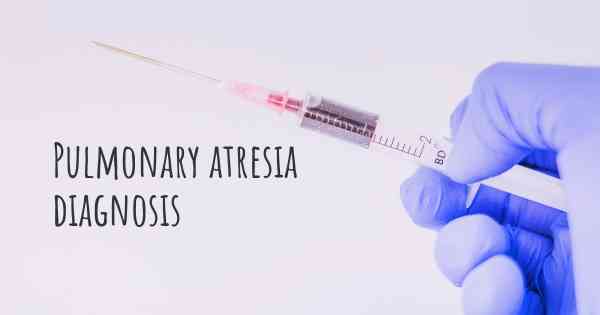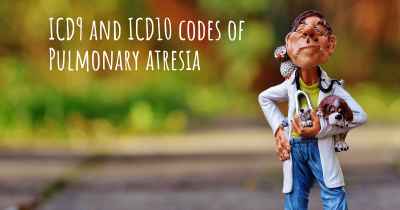How is Pulmonary atresia diagnosed?
See how Pulmonary atresia is diagnosed. Which specialists are essential to meet, what tests are needed and other useful information for the diagnosis of Pulmonary atresia

Diagnosis of Pulmonary Atresia
Pulmonary atresia is a congenital heart defect characterized by the absence or severe narrowing of the pulmonary valve, which obstructs blood flow from the right ventricle to the lungs. This condition requires early diagnosis and intervention to ensure appropriate management and treatment. The diagnosis of pulmonary atresia involves a combination of clinical evaluation, imaging tests, and cardiac catheterization.
Clinical Evaluation
The initial step in diagnosing pulmonary atresia involves a thorough clinical evaluation by a healthcare professional. The doctor will review the patient's medical history, including any symptoms or signs of heart problems. They will also perform a physical examination, listening for abnormal heart sounds or murmurs and checking for other associated physical abnormalities.
Imaging Tests
Imaging tests play a crucial role in confirming the diagnosis of pulmonary atresia and assessing the severity of the condition. The following imaging modalities are commonly used:
Echocardiography
Echocardiography is a non-invasive imaging technique that uses sound waves to create detailed images of the heart. It is the primary diagnostic tool for pulmonary atresia. This test allows the doctor to visualize the structure and function of the heart, including the pulmonary valve and associated abnormalities. Echocardiography can help determine the presence and extent of pulmonary valve obstruction, the size of the right ventricle, and the presence of any associated defects.
Cardiac Magnetic Resonance Imaging (MRI)
Cardiac MRI provides detailed images of the heart using a powerful magnetic field and radio waves. It can provide additional information about the anatomy and function of the heart, helping to assess the severity of pulmonary atresia and any associated abnormalities. Cardiac MRI is particularly useful in cases where echocardiography may not provide sufficient information.
Computed Tomography (CT) Scan
A CT scan uses X-rays and computer technology to create cross-sectional images of the body. It can be used to obtain detailed images of the heart and blood vessels, providing valuable information about the anatomy and any associated abnormalities. CT scans are especially helpful in evaluating the pulmonary arteries and their connection to the heart.
Cardiac Catheterization
Cardiac catheterization is an invasive procedure that involves inserting a thin, flexible tube (catheter) into a blood vessel and guiding it to the heart. It is performed under local anesthesia and provides detailed information about the heart's structure and function.
During cardiac catheterization, the following procedures may be performed:
Angiography
Angiography involves injecting a contrast dye into the catheter, which helps visualize the blood vessels and their abnormalities. In the case of pulmonary atresia, angiography can help identify the presence and location of any collateral blood vessels that may have developed to bypass the obstructed pulmonary valve.
Balloon Septostomy
In some cases, a balloon septostomy may be performed during cardiac catheterization. This procedure involves using a balloon-tipped catheter to create or enlarge an opening between the atria (atrial septum) to improve blood flow and relieve cyanosis (bluish discoloration due to low oxygen levels).
Measurement of Pressures and Oxygen Levels
Cardiac catheterization allows the measurement of pressures and oxygen levels in different chambers of the heart and blood vessels. This information helps determine the severity of the pulmonary valve obstruction and the impact on overall heart function.
Genetic Testing
In some cases, genetic testing may be recommended to identify any underlying genetic abnormalities associated with pulmonary atresia. This can help determine the risk of recurrence in future pregnancies and guide genetic counseling.
Once the diagnosis of pulmonary atresia is confirmed, further evaluation and management planning can be initiated. The specific treatment approach will depend on the severity of the condition, associated abnormalities, and the overall health of the patient.








